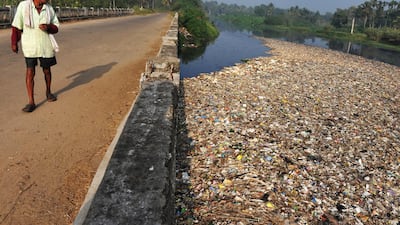Dangerous levels of antibiotics have been found in rivers across the globe, adding to fears that bugs are becoming highly resistant to lifesaving drugs.
A global study released on Monday showed that rivers in Asia and Africa are the most heavily polluted.
Led by researchers from the University of York in the United Kingdom and presented at a conference in Helsinki on Monday, the research found that antibiotics were present at 65 per cent of the more than 700 sites tested in 72 countries.
"It's quite scary and depressing. We could have large parts of the environment that have got antibiotics at levels high enough to affect resistance," Alistair Boxall, an environmental scientist at the University of York, told The Guardian newspaper, ahead of the event.
Researchers looked for 14 frequently used antibiotics and found that at more than 100 locations, levels exceeded those considered safe for preventing the spread of resistance.
Safe limits were breached at 35 per cent of sites in Africa, while in Asia the limits were broken at almost a quarter of sites, with one location in Bangladesh recording concentrations of an antibiotic called metronidazole that were 300 times safe levels.
The problem is greater in poorer countries reportedly because wastewater facilities there are often unable to remove antibiotics, and because rubbish and sewage – which may contain antibiotics – are often dumped in waterways. Political instability is also cited as a factor, with areas such as the Israeli-Palestinian border badly affected.
In South America, North America, Europe and Oceania safe limits were exceeded at 18 per cent, 15 per cent, eight per cent and six per cent of sites respectively.
The researchers think that the high levels found in the environment could also harm wildlife, something that follow-up research will investigate.
Dr Bobomurod Keldiyorov, a family medicine specialist at the Canadian Specialist Hospital in Dubai, said that a key cause of resistance in bacteria was the “misuse or overuse of antibiotics”.
“It is very important to use antibiotics carefully to reduce the likelihood of developing antibiotic resistant bacteria,” he said, adding that individuals should only take them under medical guidance.
Resistance increases when antibiotics are used in healthcare or leak into the environment because susceptible forms of bacteria are killed, while resistant types can reproduce and increase in number.
Dr Keldiyorov described antibiotic resistance as having “huge” implications and said it was a risk to organ transplants, chemotherapy and surgery that required antibiotics.
“A UN report on drug resistance estimates drug-resistant diseases could kill 10 million people a year by 2050,” he said.
“Also the cost of treating drug-resistant disease are huge and, according to experts, the expected impact of antibiotic resistance, unless any urgent measures are taken, will be approximately $100 trillion [Dh367 trillion] in lost output.”
The UAE’s Antimicrobial Surveillance Programme has shown that antibiotic resistance is spreading, while the health ministry has called on pharmacies to sell antibiotics only on prescription, although reportedly this is often ignored.
The issue has moved up the scientific community’s agenda, with Dubai earlier this year hosting the 2nd UAE International Conference on Antibiotic Resistance, where specialists from the Emirates and other parts of the Gulf region shared the latest research.
Indicating the scale of the threats, Dame Sally Davies, England’s chief medical officer, said last month that the risks from antibiotic resistance were as serious a threat as climate change, describing them as “the equivalent to extreme weather”.
Helen Hamilton, senior policy analyst for health and hygiene at the charity Water Aid, told The National that a lack of access to clean water in healthcare facilities in poorer countries resulted in hospital-acquired infections, which have to be treated with antibiotics, increasing the spread of resistance.
“In certain countries, because the first line of defence isn’t there, often healthcare staff are pushed into using prophylactic antibiotics,” she said.


